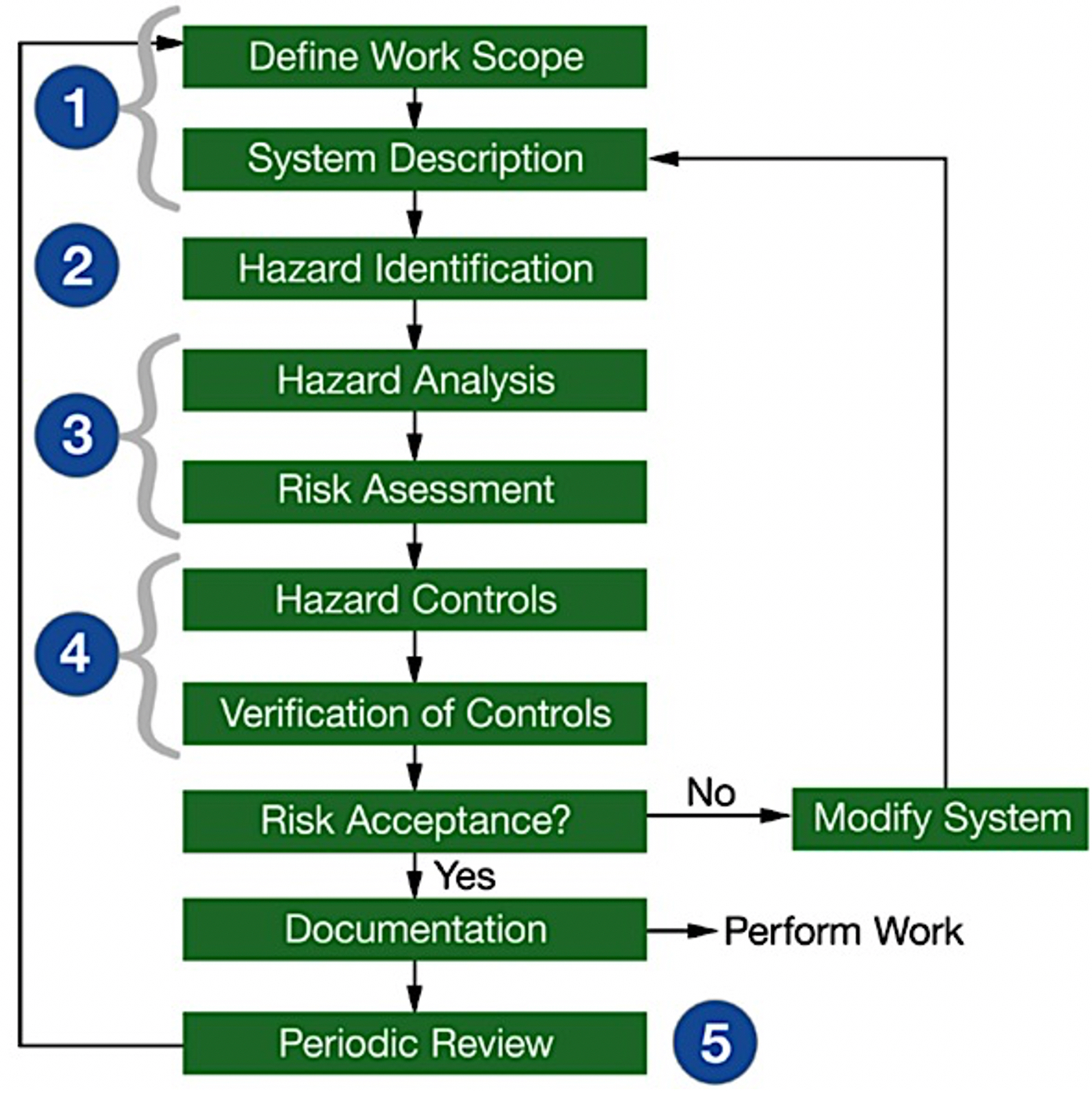Hazard Analysis and Risk Assessment
Hazard Analysis and Risk Assessment are typically carried out in five steps:
- Define the scope of work and describe the system and its components
- Identify hazards
- Evaluate the impact of the hazards on staff, equipment, the public and the environment. Assess the likelihood and severity of each hazard (assess the risk).
- Lower risk levels by techniques such as changing the system design, identifying engineering and/or administrative controls, and selecting appropriate personal protective equipment (PPE). Then determine if risk has been reduced to an acceptable level. (Iterate back to Step 1 to ensure no additional hazards have been introduced by controls or changes to the system and its components.)
- Follow up actively with periodic review of work scope and hazards
The Hazard Analysis and Risk Assessment process should include members of the project and/or safety teams that have expertise in the various aspects of the project (e.g., project management, chemical systems, electrical systems, waste management, etc.). The process should continue throughout the operational lifetime of a system. New hazards may be identified for an aging system or as operating parameters change over time. These new hazards, and their associated risks, must be continually identified, evaluated, and resolved.


